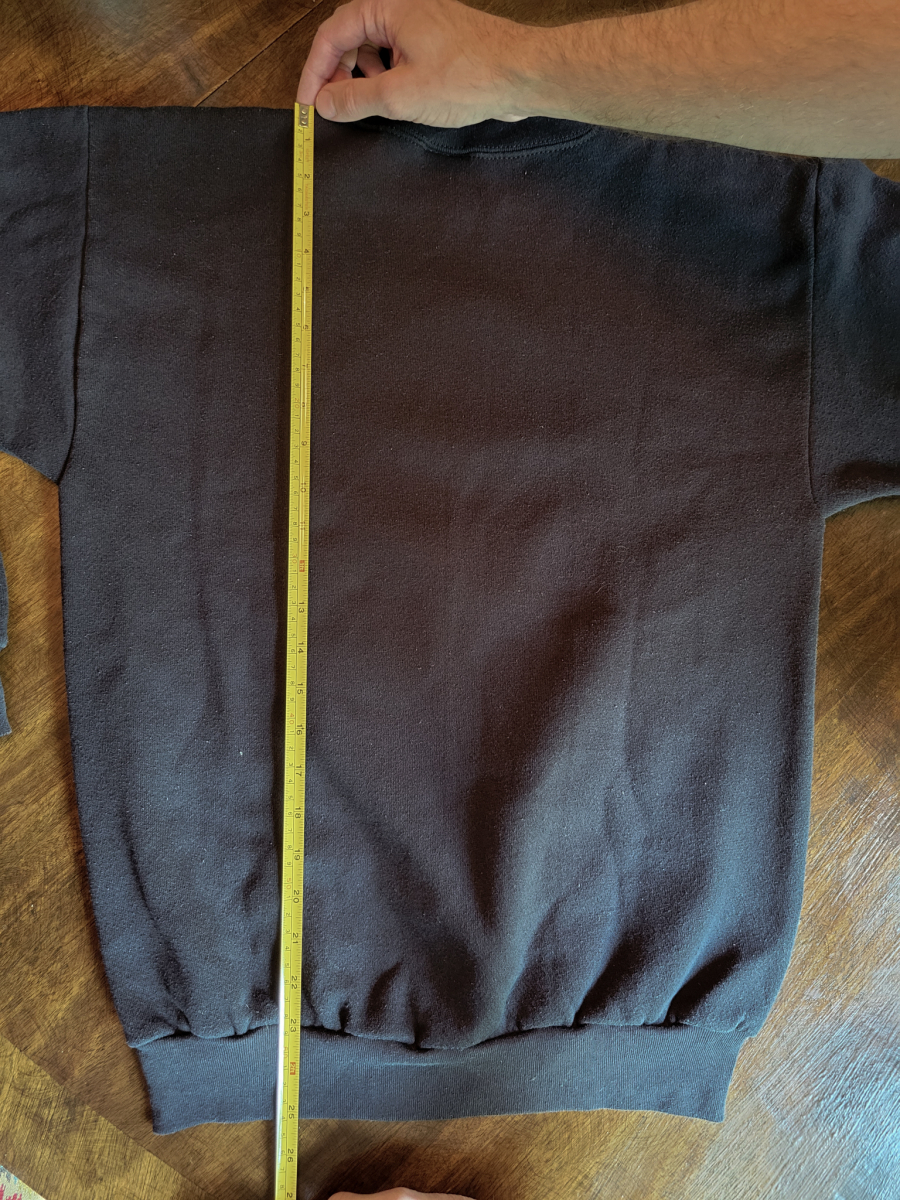How to measure shirts, sweatshirts, sweaters, and blouses for an accurate fit
✧ 10% off your order when you purchase 2 or more items ✧
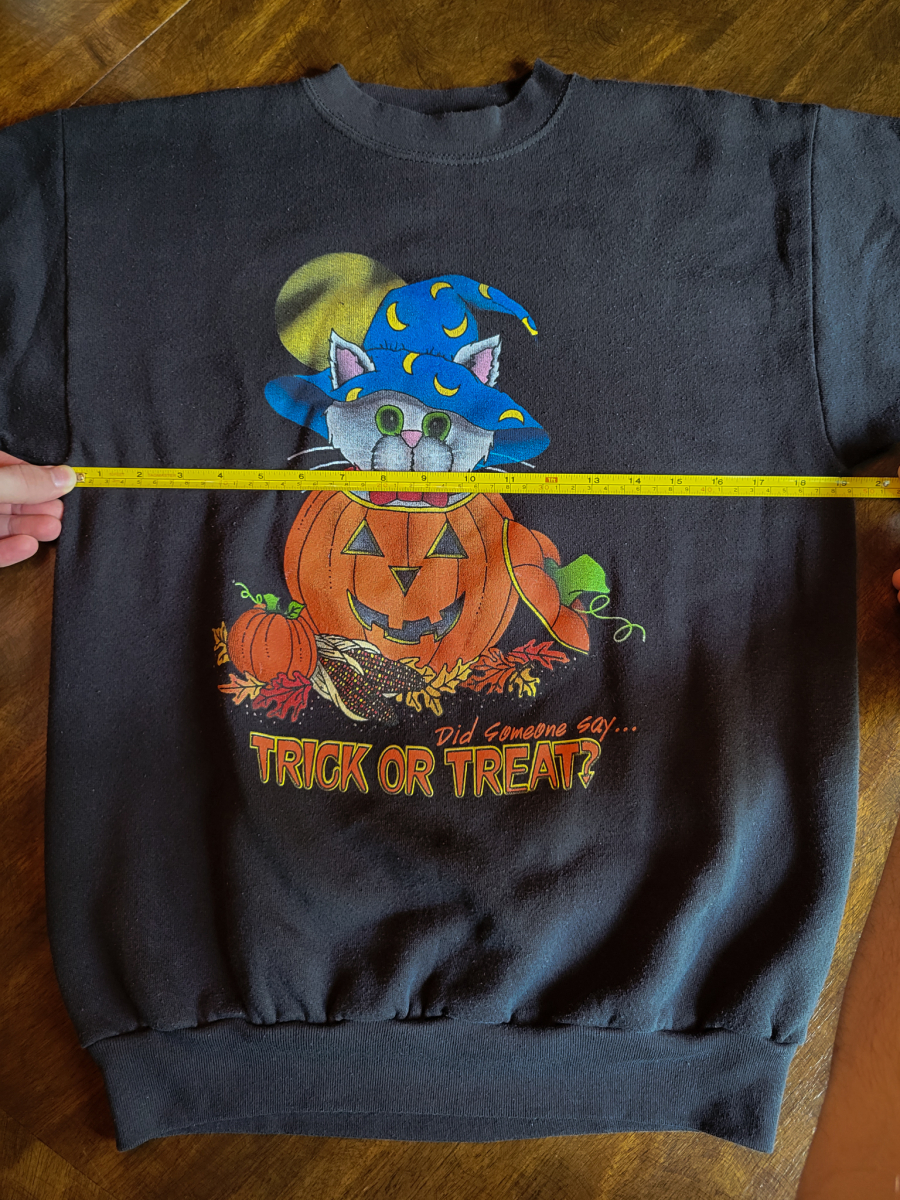
This is a complete guide on how to measure tops (shirts, sweaters, sweatshirts, jumpers, pullovers, and blouses) and then annalyze those measurements, for the best possible fit when online shopping at the Manor. This guide is specific to how we measure our merchandise, and other online retailers may have different ways of doing things with different sets of instructions.
All of our merchandise is measured laying flat on a smooth surface, without any stretch applied to the fabric. If the fabric stretches to fit, or has elastic banding, this will be mentioned in the listing.
We use 5 possible measurements when listing our tops:
Compare a similar item you have that fits you, to the measurements in the listing of the item you are thinking of buying. For example, if you are thinking of buying a shirt, grab a shirt that you own that fits you how you like. Take your own shirt, lay it on a flat surface, and perform the measurements as listed below. If the measurements you get from your own shirt, are similar to the shirt you are thinking of buying online, the online product will most likely fit you.
A few other factors that should be taken into account for the best possible fit:
Fabric Content
The fabric content is important to know for two reasons. First, it can tell you if the garment has any stretch to the fabric. With a knit fabric compared to a woven fabric, the knit fabric is going to have more stretch, while the woven fabric will probably have none. And a blended shirt with both cotton and spandex, is going to have more stretch to it than a shirt with just cotton. Look for things like knit vs woven, spandex percentage, or elastic banding. Our merchandise will usually have all this information listed under the Materials section at the bottom of the page.
For example, if you are thinking of purchasing a sweatshirt online, but only own t-shirts to compare it to, you might want to take into account the fabric of the sweatshirt you are looking at online. Is the fabric a lot thicker than the t-shirt you are comparing it to? Is the fabric stretchy, or stiff? The fact that sweatshirt fabrics are usually thicker than t-shirt fabrics, means you might want to add an extra half inch or full inch to your shirt measurement to get the same type of fit with the sweatshirt you're thinking of buying.
Desired Fit
The desired fit you are wanting is a big factor in figuring out if an online clothing item will fit you. Do you want a slim, baggy, or boxy fit?
'Slim fit' is how a lot of clothing from the 1970's and earlier will fit. People wore shirts, tank tops, pants, and dresses closer to the body in those days. A 1970's band shirt marked as a size Medium, will probably fit more like a modern size Small. Band shirts now-a-days are made for more of a boxy fit, with less stretch to the fabric. Band shirts even going into the 1980's may fit a lot smaller than the modern day crew neck shirts you are used to.
Baggy fit (or oversized) is going to be how a lot of more modern clothing is shaped. This is the trend going on right now: oversized shirts and loose fit pants. Even a lot of the popular dresses have a baggier fit, such as prarie and maxi dresses. Baggy fit is usually going to translate to mean an Oversized Fit. Many people will buy a size or two up in order to get this desired style. Generally, when looking at a baggy fit or oversized top, only the chest measurement needs to be taken into account, making this the easiest type of item to shop for online.
Boxy fit is simply a baggy fit, that is cut off short. For shirts, instead of an oversized shirt that fits almost like a dress, a boxy shirt will be wide in the shoulders and torso, but the length will usually only go to the top of the hips at most. A lot of shirts in the 1990's even going into the 1980's fit this way. Often times shirts from the 1990's will appear to have the Baggy Fit, but when you look closely, you notice the shoulders are a little too wide, and the length is a little too short. Sweatshirts, button up shirts, and regular t-shirts from the 1990's all tend to have this Boxy Fit.
Garment's Structure
The garment's structure is going to refer to how the garment was made. Usually the pattern, seaming, and darts all play a part in this. Unstructured clothing like t-shirts, sweatshirts, and sweaters are all going to be pretty straight forward. It's in items like blouses and dresses that the structure will become more of a concern when considering if an item will fit you. Most women's blouses are made in a way so that they dip in at the waist. So if the blouse fits you at the chest, you will still need to see if it fits you at the waist, unlike an oversized t-shirt. Same idea with dresses- a lot of them are made to form to a women's body, and multiple measurements must be taken into account. Some sweaters or sweatshirts may be roomy in the shoulders and chest, but have a smaller waistband. This fit usually makes the clothing item ride up on the body, making the top shorter.
Chest Width
At number one, this is the probably the most important measurement available.
Place your tape measurer horizontally across the garment, from one armpit seam to another. The armpit seam is at the very bottom of the seam where the sleeve is sewn into the torso. Or in other words- where your armpit would be! For sleeveless tops, measure in the same way, from armpit to armpit.
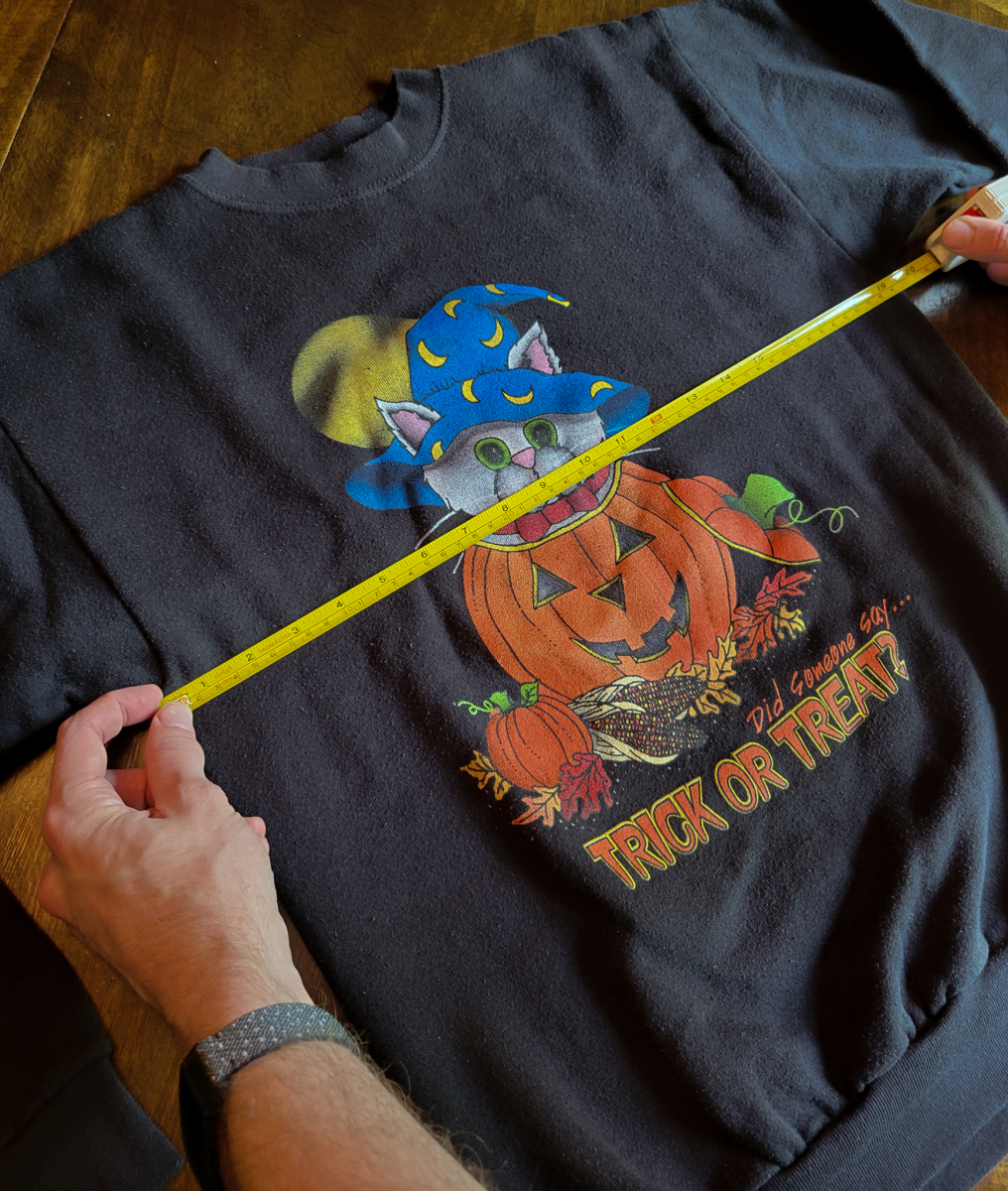
Waist Width
Place your tape measure horizontally across the garment.
For sweatshirts and sweaters, this will be going across the ribbed knit waistband at the hem. Place it across the top seam, where the band is sewn into the fabric.
For regular t-shirts, the waist width measurement might be left out of the product listing if this measurement is the same as the chest measurement.
For blouses and more slim fit tops, the waist width should be measured a little higher up, where the shirt dips in at the smallest part of the waist. A hip measurement will then also be noted in the listing, as being the horizontal measurement at the hemline.
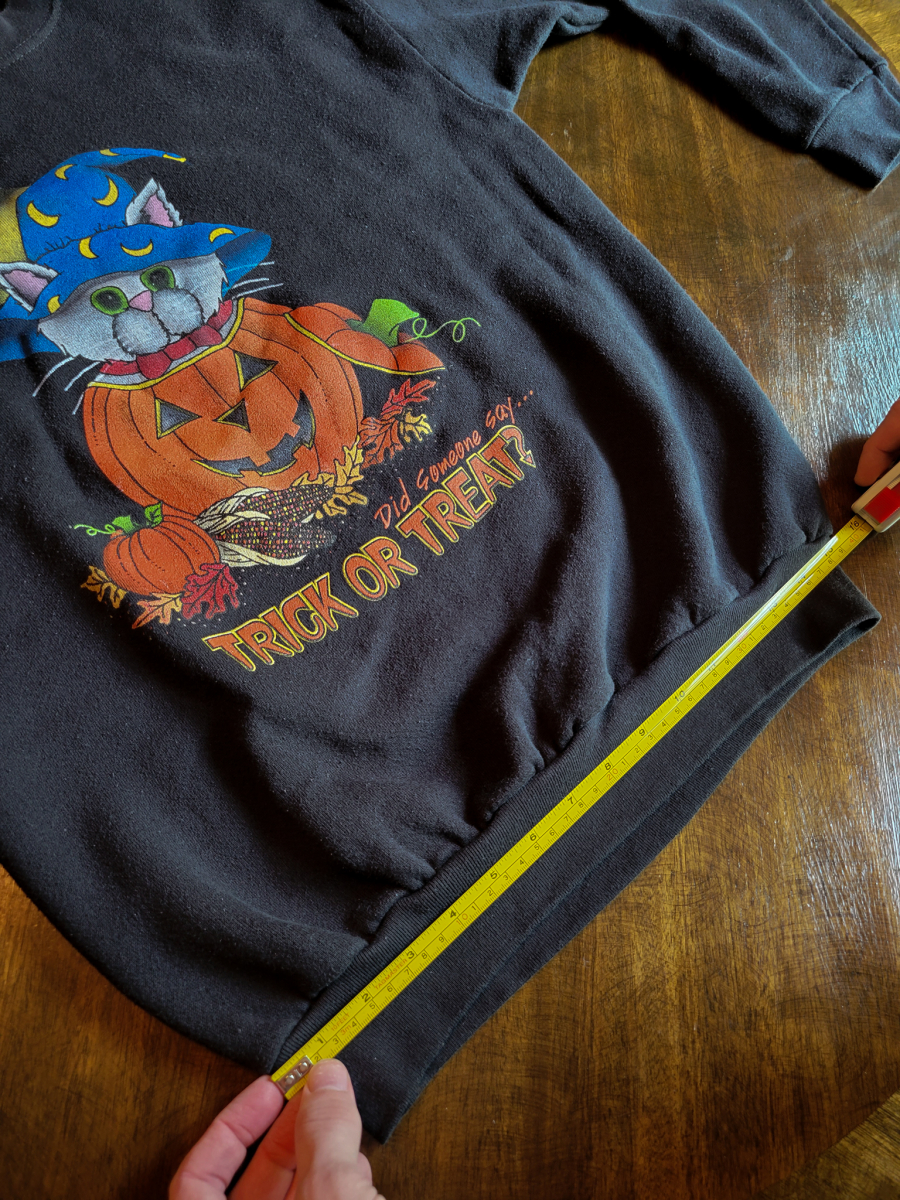
Sleeve Length
Sleeve length will always be measured underneath the sleeve, from the armpit seam to the end of the wrist hem. This makes the measurement easier for tops without shoulder seams, like raglan sleeves.
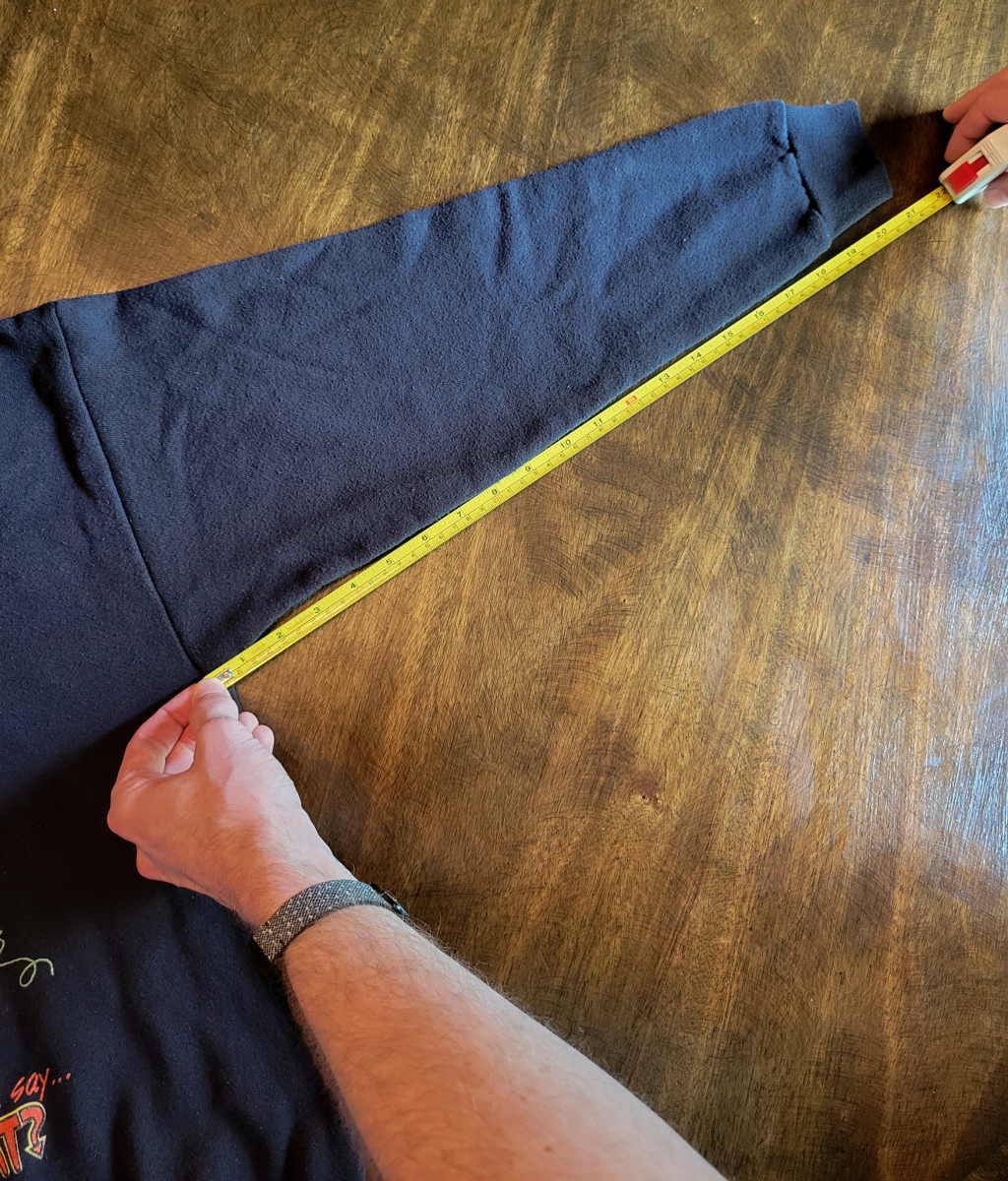
Shoulder Width
Shoulder width should be measured horizontally across the back of the shirt. Measure from one shoulder seam to another.
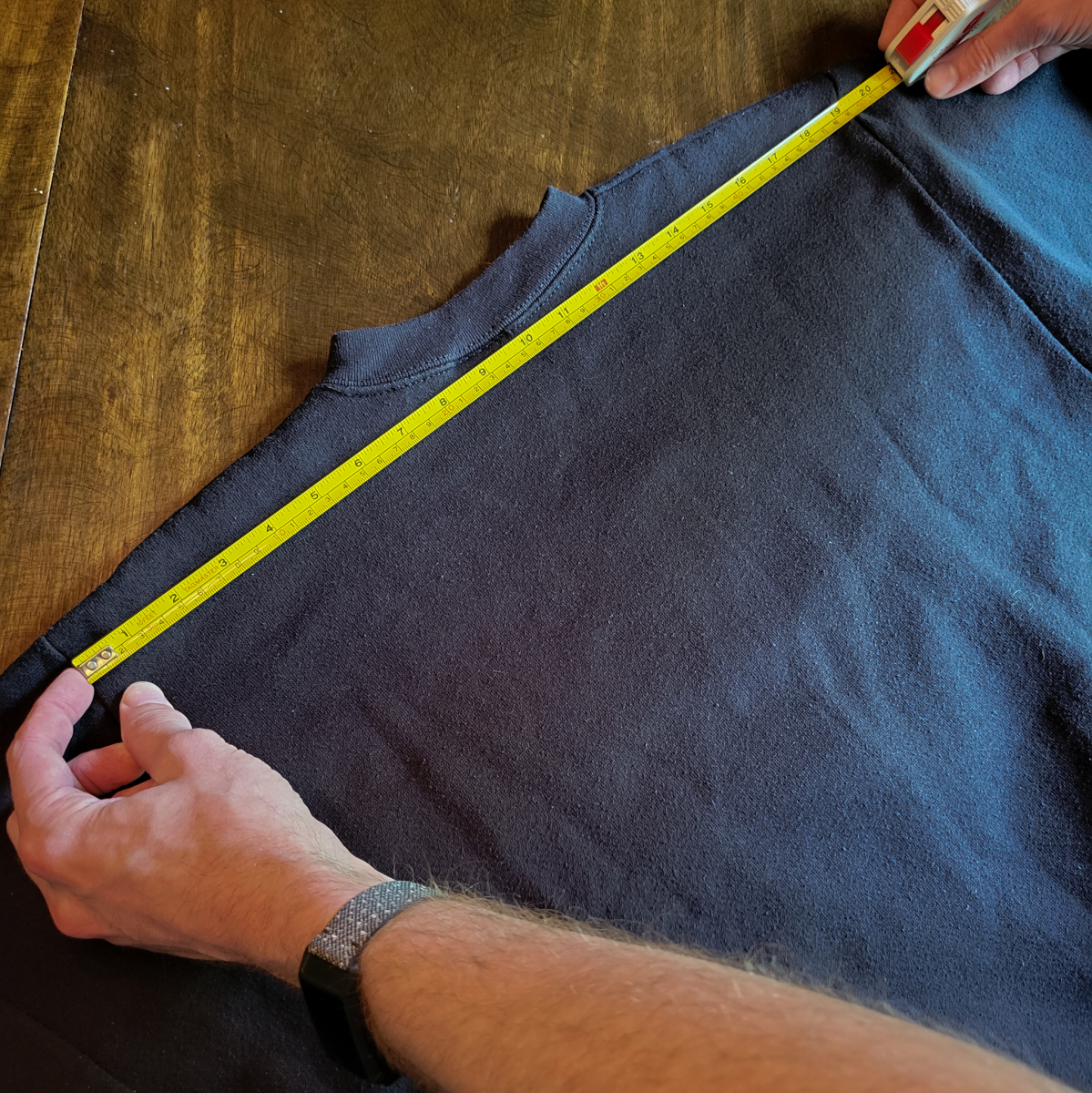
Length
Length is measured on the back of the garment. Usually measured in the center of the shirt, from the neck to the hem, but sometimes from the top of the shoulder to the bottom hem.
